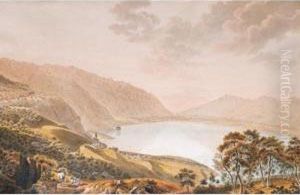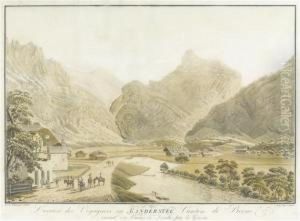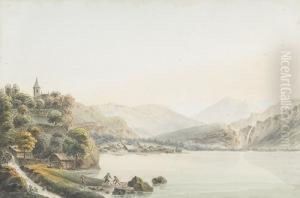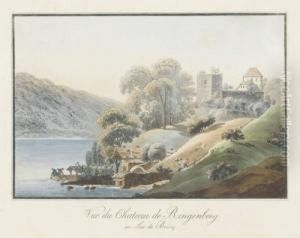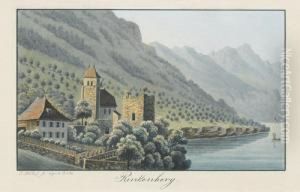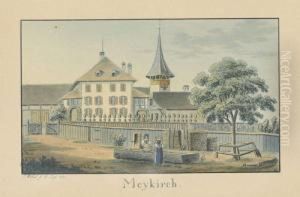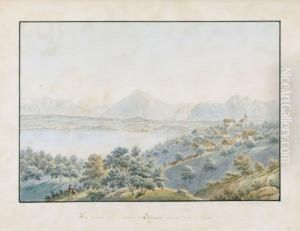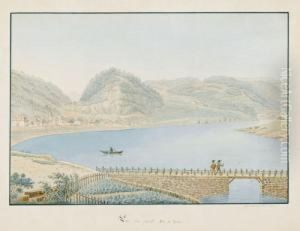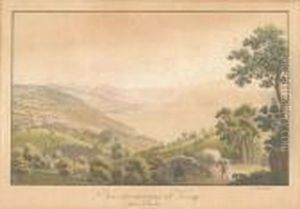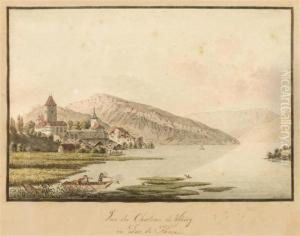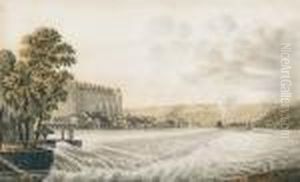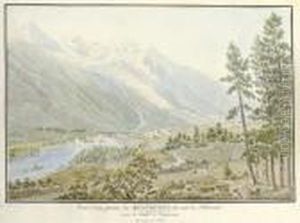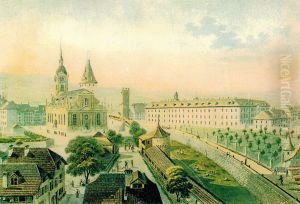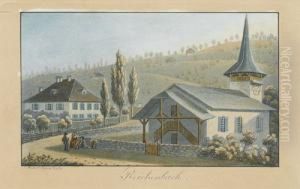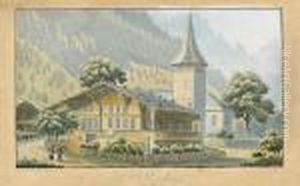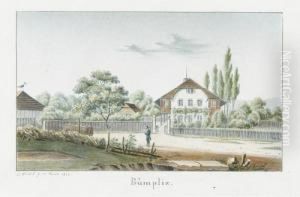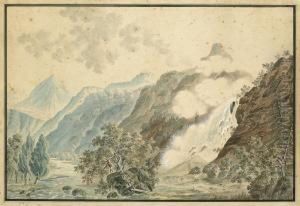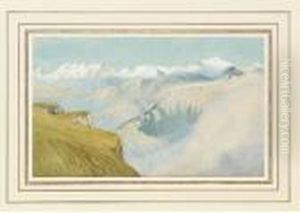Jakob Samuel Weibel Paintings
Jakob Samuel Weibel was a Swiss painter, draftsman, and engraver born in 1771, in Bern, Switzerland. His work is part of the artistic movement of the late 18th and early 19th centuries, a period that bridged the transition from Rococo to Neoclassicism in European art. Weibel is particularly noted for his landscapes, portraits, and architectural drawings, capturing the essence of Swiss scenery and society during his lifetime.
Weibel's early life was marked by his apprenticeship with several local artists, which helped him to develop a foundational skill set in drawing and painting. His talent was recognized early on, and he received commissions from various patrons, which allowed him to travel and study further. Throughout his career, Weibel was influenced by the Romantic movement, which is evident in the emotional depth and picturesque quality of his landscapes.
In addition to his paintings, Weibel contributed significantly to the field of printmaking. His engravings and etchings helped to disseminate images of Swiss landscapes and cultural life beyond the country's borders, making a considerable impact on the European perception of Switzerland as an idyllic and pristine land. These works were particularly popular among tourists and helped to foster an early form of cultural tourism in Switzerland.
Despite his success, Jakob Samuel Weibel remained deeply connected to his Swiss heritage, often depicting scenes of everyday life in the Swiss countryside. His work reflects a deep appreciation for the natural beauty of his homeland, as well as a keen eye for the details of rural and urban life. Weibel's contributions to Swiss art were recognized during his lifetime, and he remains an important figure in Swiss art history.
Jakob Samuel Weibel passed away in 1846, leaving behind a legacy that continues to be celebrated for its contribution to the Romantic movement and its portrayal of Swiss national identity. His works are preserved in numerous Swiss museums and continue to be studied and admired for their historical value and artistic merit.
